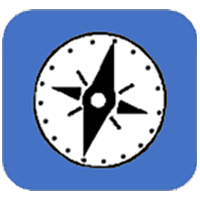Webinar
Webinar recording.
The following topics and presenters are included:
Cheatgrass Impacts and Management Options in Western U.S. Ecosystems, presented by Ali Urza and Brice Hanberry
Impacts of Invasive Cogongrass on Private and Public land: Prevention and Control Strategies, presented by Rima Lucardi
Ventenata Invasion in the Western U.S.: Using Remote Sensing & Model Output to Understand Invasion Risk, presented by Becky K. Kerns
Webinar recording.
Description: Rangelands produce ecosystem services that not only support biodiversity and wildlife, but also sustain livestock operations and rural economies. Woody encroachment is a threat to rangeland productivity, but its impact is often overlooked due to its slow pace and the positive public perception of trees. The Rangeland Analysis Platform (RAP) is an innovative online tool that combines current and historical satellite imagery with thousands of on-the-ground vegetation measurements to facilitate an exploration of trends in western vegetation over time. Using RAP’s recently developed remotely sensed products of rangeland production, we quantify the amount of forage lost to woody encroachment across western rangelands over the past three decades. Translating these losses into dollars, we demonstrate how this knowledge can be integrated into area-wide planning to stop further economic loss and prevent wholescale ecosystem transitions.
Presenters: Brady Allred (University of Montana) and Dirac Twidwell (University of Nebraska-Lincoln).
Webinar recording.
Description: Native plant diversity is the hallmark of a healthy ecosystem. In Nevada, our native plant communities are threatened by the accelerated invasion of non-native species, altered fire regimes, grazing, drought, and climate change. Slowing and reversing this largescale conversion requires coordinated efforts between researchers and land managers, working collaboratively to identify the most promising seed sources for restoring disturbed and invaded sites. The Nevada Native Seed Partnership is a group of state, federal, university, and nonprofit partners working together to increase the availability and use of native seed for rehabilitation, reclamation, and restoration activities in Nevada. This presentation will highlight some of the science and restoration efforts this partnership has accomplished to date to restore and preserve our most impacted native plant communities.
Presenter: Sarah Kulpa is the Restoration Ecologist/Botanist for the U.S. Fish and Wildlife Service in Reno, Nevada. Her work focuses on Great Basin sagebrush ecosystem restoration and threatened and endangered plant species. Sarah leads the native seed collection, increase, and restoration activities of the Reno FWS including mentoring the first FWS Seeds of Success team and helping establish the Nevada Native Seed Partnership. She received her M.S. in Natural Resources and Environmental Science from the University of Nevada, Reno and her B.S. in Biology from St. Michael’s College.
Description: Climate change is a risk management challenge for society because of the uncertain consequences for natural and human systems across decades to centuries. Climate-related science activities within the USGS emphasize research on adaptation to climate change. This research helps inform adaptive management processes and planning activities within other DOI bureaus and by DOI stakeholders.
Global climate models are sophisticated numerical representations of the Earth’s climate system. Research groups from around the world regularly participate in a coordinated effort to produce a suite of climate models. This global effort provides a test bed to assess model performance and analyze projections of future change under various prescribed climate scenarios. These climate scenarios describe a plausible future outcome associated with a specific set of societal actions. Examining a range of projected climate outcomes based on multiple scenarios is a recommended best practice because it allows decision makers to better consider both short- and long-term risks and opportunities.
Presenter: Adam Terando, Research Ecologist, Southeast Climate Adaptation Science Center
Webinar recording.
This webinar brings together a panel of postfire response experts to reflect on their experiences in addressing community needs during recent large fires. The discussion will highlight important differences in fire and postfire response on federal and non-federal lands, and a consideration of existing tools and policies and how they can be strengthened. Both the Western Forestry Leadership Coalition (WFLC) and Western Governors’ Association are developing policies to address the gaps. Mike Zupko, WFLC Coordinator will share progress to date then the panel will tackle topics including treatment effectiveness, liability, and cross jurisdictional impacts. Fire practitioners and line officers are encouraged to attend to help us bridge the knowledge gap between fire and postfire response.
Panelist and presenters:
• Anne Bradley, The Nature Conservancy in New Mexico
• Cara Farr, US Forest Service, National BAER Team Leader
• Micah Kiesow, US Forest Service, Santa Fe National Forest
• Katherine Rowden, National Weather Service/NOAA
• Rich Schwab, National Park Service, National BAER Team
• Mary Stuever, New Mexico State Forestry, Chama District Forester
• Mike Zupko, National Wildland Fire Leadership Council
View webinar recording.
The Fort Belknap Indian Community (FBIC) Native Seed & Grassland Restoration Program was designed to meet DOI, BLM, and Plant Conservation and Restoration Program Strategic Goals, via partnerships with FBIC and the Society for Ecological Restoration (SER). Launched in 2019, and led by an Indigenous PI, this Traditional Ecological Knowledge (TEK)-based program focuses on developing genetically appropriate native plant material for habitat restoration; inventorying and prioritizing plant populations; and implementing and assessing restoration efforts through monitoring. Working on BLM lands, in consultation with Aaniiih and Nakoda elders and employing and empowering tribal youth, we are using Assessment, Inventorying, and Monitoring (AIM) protocols to identify plant populations, and then making collections from them for the Seeds of Success (SOS) program. Our long-term goal is to empower FBIC in creating a community-led greenhouse program to grow out native seeds, focusing on culturally significant species, thereby benefitting the community financially in increasing BLM Stock and Foundation seed amounts to use on larger programs and for restoration of FBIC and other Native American lands. FBIC has invited us to expand seed collection onto FBIC land, to help the community advance restoration efforts of degraded rangelands to support Greater sage-grouse and bison conservation.
Webinar recording.
Description:
- Articulate successful applications of Good Neighbor Authority for tribes, counties, and states;
- Provide examples of when tools like Good Neighbor Authority are unlikely to be successful;
- Discuss how to use tools from the Tribal Forest Protection Act;
- Discuss how to use tools from the Indian Self-Determination and Education Assistance Act; and
- Discuss how to use Stewardship Contracting.
Presenters:
- Rob Farrell, Virginia State Forester;
- Jim Durglo, Intertribal Timber Council Wildland Fire Technical Specialist;
- Lynn Sholty, USDA Forest Service Grants and Agreements Specialist; and
- Nils Christoffersen, Wallowa Resources Executive Director.
View workshop recordings.
During this virtual workshop we will share case studies and lessons learned from the field, showcase multiple scales of potential operational delineations (PODs) work that have been utilized and adapted for a range of applications, identify necessary developments in collaborative fire planning and PODs, and much more.
The workshop will be hosted by RMRS’s Wildfire Risk Management Science (WRMS) team. The WRMS team co-developed PODs and other fire planning tools in collaboration with local experts. These tools have been widely adopted by national forests and other fire and land management groups.
The workshop is designed for a variety of audiences including fuels planners, FMOs, line officers, management planners, community collaboratives, scientists, state and local fire and fuel managers, and consultants. Interested and new users are encouraged to attend.
Webinar recording.
Pollinators are essential to the survival and health of natural ecosystems but are declining worldwide. Because of this, there is urgent need to restore pollinators and the services they provide. One way to address this need is to use pollinator-friendly plants in revegetation projects (roadsides, fire rehabilitation, etc.), but land managers lack information about which plants are best for pollinators. RMRS and partners at Montana State University are assessing the pollinator-friendliness of native plant species that are available for revegetation in Montana to produce a guide identifying the best species mixes to support the greatest number of species and abundance of pollinators. We found that plant species vary widely in the abundance, diversity, and community of pollinator species that each attract. However, several plant species are superstars that are visited by most pollinator species across a diversity of habitats. These focal-plant species can form a backbone in seed mixes to successfully restore diverse and stable plant and pollinator communities.



